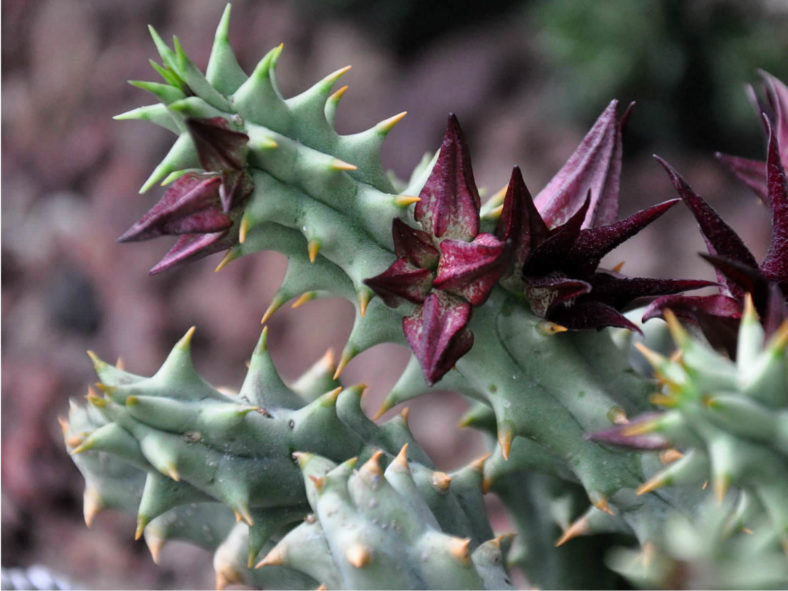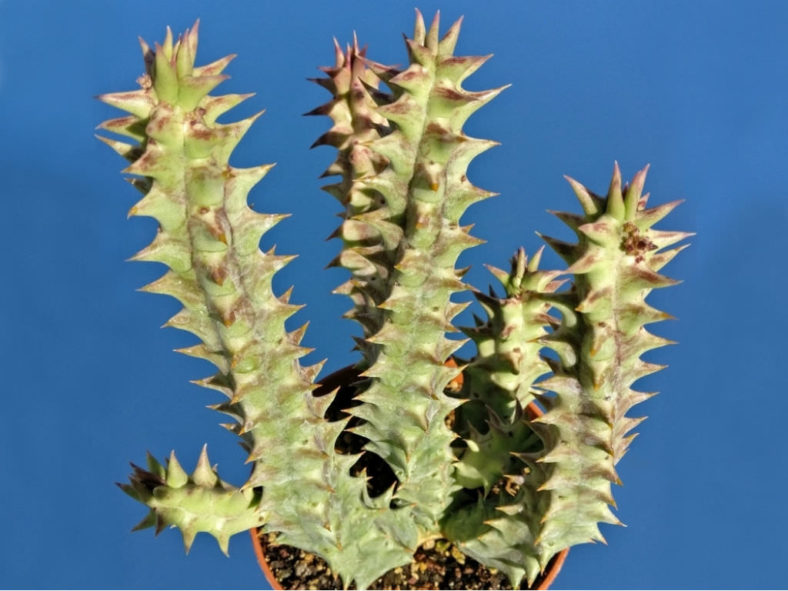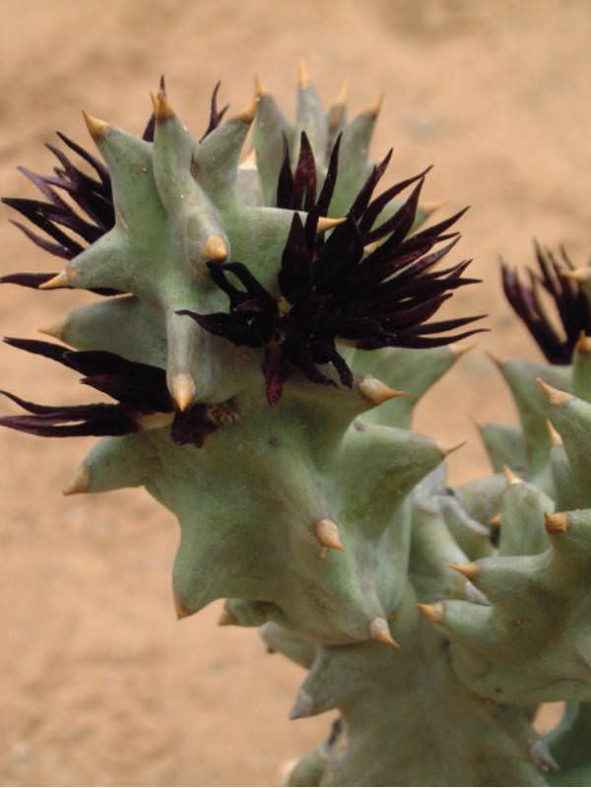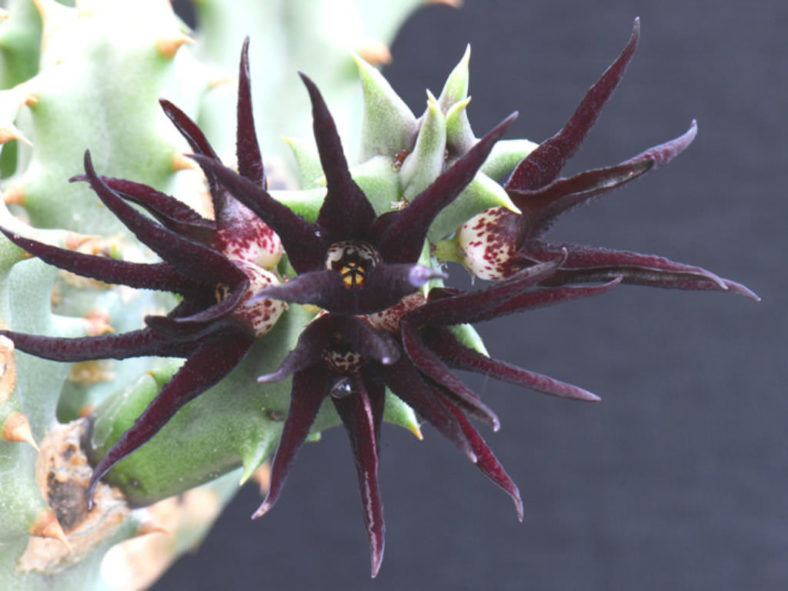Scientific Name
Quaqua mammillaris (L.) Bruyns
Common Name(s)
Aroena
Synonym(s)
Stapelia mammillaris, Boucerosia mammillaris, Caralluma mammillaris, Caralluma winkleri, Caralluma winkleriana, Pectinaria mammillaris, Piaranthus mammillaris
Scientific Classification
Family: Apocynaceae
Subfamily: Asclepiadoideae
Tribe: Ceropegieae
Subtribe: Stapeliinae
Genus: Quaqua
Etymology
The specific epithet "mammillaris" (pronounced "mam-mil-LAIR-iss") means "having nipples" and refers to the tubercles on the stems of this species.
Origin
Quaqua mammillaris is native to Namibia and South Africa (Cape Province).
Description
Quaqua mammillaris is a densely branched succulent shrub with green, leafless, 4- to 5-angled stems with irregularly arranged tubercles, each sharply armed with a hard, yellow-brown spike. It can reach a height of 20 inches (50 cm) with a spread of 2 feet (60 cm). The stem colors vary from green to purple or brown, or can occasionally be green with mottling of purple-brown. They can grow up to 20 inches (50 cm) long and 1.6 inches (4 cm) in diameter, branch mostly from their base, and root only from the central stem.
The flowers are dark purple-black inside, and this dark color continues just into the mouth of the tube, where it breaks up to form spots and rings on a white background in the tube. They can reach a diameter of 1.1 inches (2.7 cm) and appear in large numbers in many dense, more or less simultaneously opening clusters along grooves of the stems in fall. The fruits are paired follicles with reddish markings and resemble antelope horns. They split on the side, releasing seeds with hairy attachments for wind dispersal.

How to Grow and Care for Quaqua mammillaris
Hardiness: USDA hardiness zone 9a to 11b: from 20°F (6.7°C) to 50°F (10°C).
Stapeliads are relatively easy to grow. They should be treated as outdoor plants as they will easily rot indoors and cannot flower without exposure to outdoor temperature fluctuations. They should be grown under cover so that watering can be controlled. They require a reasonable amount of sunlight to promote flowering and maintain a well-shaped plant. Very shady positions will produce very poor flowering. Stapeliads originate from climates where they survive extremely high temperatures during the summer months. Hence, most growth is in spring and fall, with flowering in fall when the weather starts to cool down. In the growing season, water moderately when needed, ensuring the soil is fairly dry between waterings. Do not water between November 1 and March 1.
The easiest and best way to propagate Stapeliads is by using stem cuttings, which can be taken virtually throughout the year. The seed is also a method of propagation.
See more at How to Grow and Care for Stapeliads.
Links
- Back to genus Quaqua
- Succupedia: Browse succulents by Scientific Name, Common Name, Genus, Family, USDA Hardiness Zone, Origin, or cacti by Genus
Photo Gallery
Click on a photo to see a larger version.


